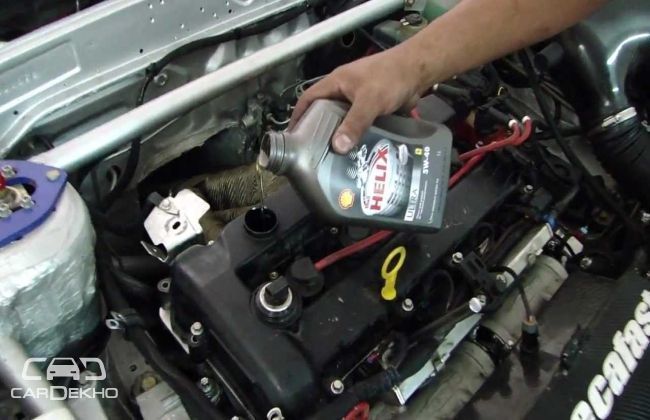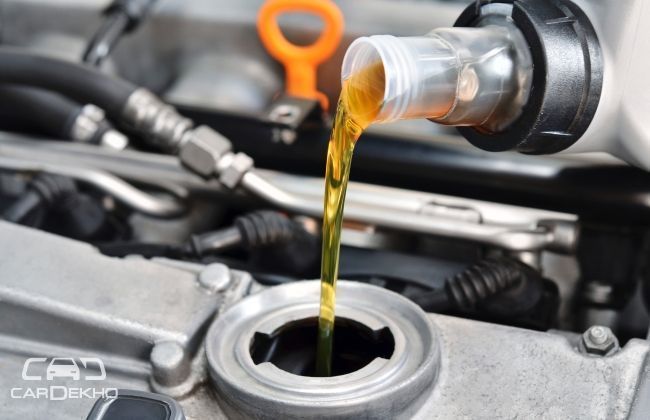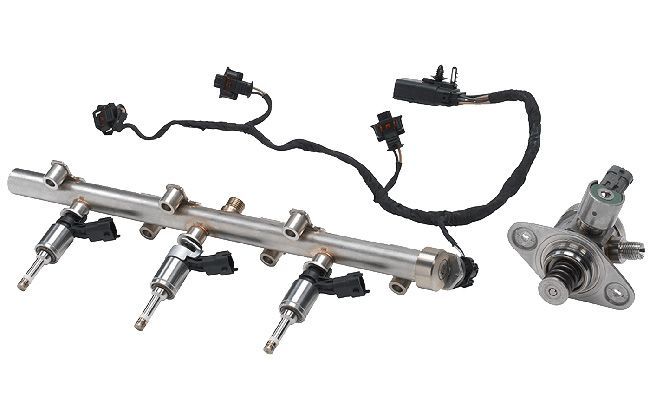Basics of car engine oil
Modified On Jun 26, 2014 11:40 AM By CarDekho
- Write a comment
INTRODUCTION:-
Machines are one of the most beautiful and innovative efforts by the human mankind. They have made our lives easier and so fast which can be compared to the quick blink of an eye. But as they say, nothing in this world is perfect, and same goes in case with the machines too. Cars too aren’t an exception, as the engines under their hood act as the pumping hearts for them. For smooth operations, best possible performance and longevity factor of such a heart is a must, and it is where engine lubricants come in action. For many of common men like us, these oils are as common in communication as the other oils in usage, but technically they are way too differentiable for automobile aspects. What they are, what they do, how they do, etc. are some of the common questions which arise in our minds, and this piece of writing covers all these factors one by one, as follows:-

WHAT IS ENGINE LUBRICANT, ACTUALLY?
As said earlier, it may be another oil for a layman, but if cars are taken into consideration, especially their engines, the description on lubricants is a whole lot different story. In common words, the engine lubricants are those oils which are used for lubricating the internal components of the engine which are either in relative motion or even stationary. While doing such a purpose, the engine oils cover up their prime objective of reducing wear and tear of those components and hence, increasing the life of the engine of the car, in a whole. Apart from enhancing the breath of the engine, the lubricant oil also serves the primary objective of cleaning the interior engine components, preventing them rusting and cooling those components by absorbing the heat within itself. Basically, these engine lubricants are derived from those chemical compounds which are either petroleum or non-petroleum synthesized chemicals. These base chemical compounds possess hydrocarbons, poly olefins and poly alpha olefins as the chief constituents. In short, the whole engine lubricant is nothing but a whole story of carbon and hydrogen as their major constituents, which are responsible for their various performance and efficiency characteristics. These engine lubricants, basically, are semi-solid or liquid in state, such that they can easily flow or move in motion in the whole engine and increase their reach even in the remotest parts within an engine and lubricate it.

WHAT IS ITS ACTUAL PURPOSE?:-
As discussed above, the primary objective of the engine oil is to lubricate the engine components. Inside the engine of a car, there are several components whose motions are in relation with each other. This relative motion is due to the effects of motion of one component on the other one, which means they both are in contact with each other. The motion of these components against each other results in generation of frictional force, which produces heat from the kinetic energy produced by rubbing of the surfaces of those two components. It is where the lubricating oil comes into action by forming up a thin layer of itself between those two components, thus absorbing that heat to a much larger extent and thus, finally resulting in decreased wearing of those engine components, and as a direct effect, decreasing the fuel consumption and increase in power output as well. The engine lubricant performs entirely different for both petrol as well as diesel engines, depending upon the temperature ranges. In the engines which demand petrol as the running fuel, the topmost piston ring has the tendency to expose the engine lubricant to the temperature of upto 160 °C, whereas in a diesel operated engine, the same function can be carried out till a temperature of as high as 315 °C. At such high temperatures, the layers of the engine lubricants with higher viscosity indices do become less thin.
In addition to the prime aim of lubricating the engine components, the protective layer of the engine oil also prevents those components from the corrosive actions, caused by its exposure to oxygen at such elevated temperatures. Also, having detergents as additional additives may also cause the engine oil to perform an extra task of washing out all the contaminants and sludge built up within the engine, hence keeping the engine as clean as possible. The engine oil also acts as a cooling agent by absorbing the extra amount of thermal energy produced at peak temperatures, thus keeping the temperature of the engine under check.
WHAT ARE ITS PROPERTIES?
The engines, as understood, are the core part of an automobile, whatever the type of the car may be. To keep such an essential component worthy to its credentials, the performance of the engine oil fed to it should match up that of the engine. For that, the properties of the engine lubricants should be strong and balanced enough. As far as composition is concerned, the engine lubricants are primarily comprised of hydrocarbons, which are derived from thick and heavy petroleum based crude oils. These hydrocarbons may contain carbon atoms, from 18 to 34 in number per molecule of the oil. These carbon atoms determine the various properties of the engine oil, the most important of which is its viscosity.
In common words, the viscosity of an oil is defined as the thickness of its flow or the capability of the oil to offer resistance to its flow. To maintain the optimum performance of the lubricating oil, the film of the oil must have high viscosity. For this, the viscosity index of the oil is taken into study, which is a measure of the change in viscosity of the oil with any change taking place in its temperature. In performance aspects, the viscosity of the oil changes less if it has higher viscosity index and vice versa.
Then comes the temperature requirements. There are basically two temperatures around which the story of the performance of the lubricants revolve. First is the pour point of the oil, which is a temperature at which the oil stops to flow. This temperature should be as low as possible, so that the engine lubricant may flow even the drastically cold temperatures. The pour point of the oil is determined by two tests – Cold Cranking Simulator and Mini Rotary Viscometer, which are defined as per the SAE classifications for different oils. The second one is the flash point, which is defined as the lowest temperature at which, when ignited, the oil begins to burn and give out vapors. The flash point should be high enough to avoid the dangerous circumstances of the oil to self-ignite.
In addition to these, Total Base Number (TBN) and Total Acid Number (TAN) determine the basicity and acidity of the engine oil respectively. These numbers determine the lubricant’s capability to neutralize the acids and base produced as the by-products formed in the combustion process of the engine.
WHAT ARE THE GRADES OF DIFFERENT OILS?:-
You may own a Maruti Alto and your cousin may own a Toyota Fortuner. You may be living in the tinsel town of Rajasthan, where temperatures may be as scorching as upto 47 °C, whereas that same cousin may be living in a snow capped town in Himachal, where the temperatures may be as low as 0 °C to shiver him out. In such extremity conditions of both the type of vehicles and temperature differences, the engine oils must be different, and this identification of difference between two oils is done by their specified grades.
Thanks to the era of standardization, the Society of Automobile Engineers (SAE) has made up a numerical code system to give up gradings to all kinds of engine lubricants, which depend upon their characteristics of viscosity. The SAE gradings of viscosity ranges from a low viscosity of 0 to a high viscosity of 60 – 0, 5, 10, 15, 20, 25, 30, 40, 50 and 60. The lower numbers from 0 to 25 are given a suffix of ‘W’, indicating that the engine lubricants of those temperatures are primarily designed for sustainability in winter, or you can say, colder conditions, whereas the remaining viscosities from 30 to 60 are used for behaving well in the warm conditions. Only the viscosity grading of 20 is one such rating, which can be used for both cold as well as warm condition. This whole science of viscometrics of these grades is mentioned well in the document SAE J300.
On a more scientific note, the grading of engine lubricants is well of two types:-
Single Grade – The engine lubricants of this category do not use any kind of additives or viscosity index improver and are able to perform only in one particular temperature condition. There are total 11 viscosity grades, which come under this class of oils – 0W, 5W, 10W, 15W, 20W, 25W, 20, 30, 40, 50 and 60. The dynamic viscosity of such oils is measured in terms of mPa-s.
Multi-Grade – Unlike the single grade oils, these utilize viscosity index improvers to perform well in both kinds of temperature conditions, whether hot or cold. They are basically designated as, for example 15W-50, where 15W stands for grading at a low temperature and 50 tells us the grading of the oil at high temperature. Usually, these oils are synthetic in nature, to avoid the breakdown of the base oil.
WHAT ARE THE ADDITIVES USED?:-
The use of petroleum based mineral oil is not enough to serve the multi-purposes of an engine lubricant. To take that extra mile and be a multi-tasker, apart from the viscosity index improvers, there are certain chemical compounds, which when added to the engine oil, allow it to perform the additional operations of keeping the engine clean, free from corrosion and neutralize the combustion-produced by-products. These chemical compounds are called additives. There are many additives used in the engine oil, main of which are as follows:-
Zinc Dialkylthiophosphate – This is usually used as an anti-wear additive, which generally protects the surface of two metal components by the application of a layer of zinc and other compounds on both of them. The amount of this particular additive is limited, so as to avoid the adverse effects caused on catalytic converters.
Calcium Sulphonates – This particular additive is added so that the engine components perform better under the conditions of extreme pressure and higher loads acting on the engines. This is also added to stop the formation of contaminants and sludge deposits and breakdown caused due to oxidation of metal components.
Molybdenum Disulphide – The additives containing this particular chemical compound is helpful in reducing friction between two metal components moving with respect to each other, owing to direct contact between them. Some engine components, when manufactured, are even pre-treated with this additive, to ensure better performance of that particular component.
WHAT ARE SYNTHETIC OILS?:-
With the passage of time and generations, the evolution of sciences and technologies has come a long way. The developments, researches and advancements in the engine lubricants have led to the invention of synthetic oils. The synthetic oils are man-made oils which were synthesized to replace the mineral-based lubricants, owing to hide their disadvantages. For the engine lubricants of the cars, the use of synthetic oils started taking up a fast pace in the mid 1970s. Having the same SAE grading system as that of the petroleum-based engine lubricants, the synthetic oils are derived from the bases of Group III, IV and V, with the addition of some extra lubricants such as synthetic esters and poly alpha olefins as performance enhancing additives. The addition of such additives results in the better performance of engine lubricants over a larger range of extreme temperatures, thanks to the increase in better mechanical properties. The biggest advantage of synthetic oils over traditional petroleum based oils is that the former have higher viscosity index, though the trait of decrease in viscosity with the increase in temperature remains applicable for synthetic oils too. The additives also allow the engine lubricants to exhibit lower pour points than traditional oils. The use of these additives also results in the need of much lower quantities of viscosity index improvers, due to which the lubricant becomes less vulnerable to degradation processes with the passage of time. This also reflects in the betterment in the oil change intervals too, which can be as long as 15000 to 25000 kms in some cases. It is this long list of advantages over traditional oils, that the synthetic oils have gradually replaced the conventional petroleum based mineral engine oils in almost all the parts of the globe.
HOW THE ENGNIE OILS HAVE TO BE MAINTAINED?
Just as the other essential parts of a car, the engine lubricant oil and the oil filter also need to be replaced after a particular period of time, which is a very simple practice and can be done by the car owners themselves. Due to the repetitive action of engine components, the engine lubricant gets exposed to by-products of fuel combustion, which may be either very minute particles of coke or black soot clogged in the lower layers of the oil, as well as the microscopic grinded metal chips, formed due to metal to metal contact of two adjacent components. Due to this, the oil gets contaminated over a particular interval of time. Thus, this contaminated oil should be replaced with a fresh new oil, having both better quality and quantity at the intervals based on time and kilometers as mentioned in the service manual of the car.










